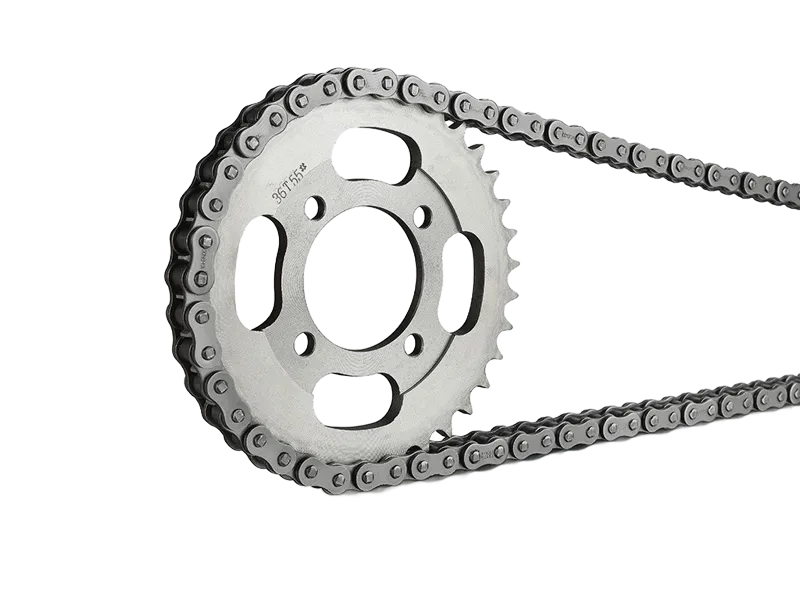
High-Performance Gear Systems | Custom Solutions for Heavy-Duty Applications
Browse our precision-engineered gearboxes, hydraulic spindles, and cast housings – designed for extreme durability, 30% longer lifespan, and seamless OEM integration.A chain wheel, often referred to as a sprocket, is a profiled wheel with teeth that mesh with a chain, track, or other perforated or indented material. It is a critical component in various mechanical systems, including bicycles, motorcycles, industrial machinery, and automotive applications. Chain wheels are designed to transmit rotary motion between two shafts where gears are unsuitable, providing efficient power transfer with minimal slippage. They come in diverse sizes, materials, and tooth configurations to suit specific operational needs, ensuring durability and performance in demanding environments. Understanding the intricacies of chain wheels can help in selecting the right product for your application, optimizing efficiency, and reducing maintenance costs.
When selecting a chain wheel, several parameters must be considered to ensure compatibility and performance. These include pitch, number of teeth, bore size, material, and hub type. Below is a detailed breakdown of these parameters in list and table formats for clarity.
| Parameter | Description | Common Values/Ranges | Application Notes |
|---|---|---|---|
| Pitch | Distance between tooth centers | 0.25 inches to 2.5 inches | Smaller pitches for high-speed applications; larger pitches for heavy loads. |
| Number of Teeth | Total teeth on the wheel | 6 to 120 teeth | Higher tooth count for reduced noise and wear; lower for compact designs. |
| Bore Size | Diameter of the central hole | 0.25 inches to 4 inches | Must be matched with shaft size; keyways or set screws may be added for security. |
| Material | Construction material | Steel, Stainless Steel, Aluminum, Nylon | Steel for strength; stainless for corrosion resistance; aluminum for lightweight; nylon for quiet operation. |
| Hub Type | Presence and design of hub | Plain, Single Hub, Double Hub | Hubs provide additional support for larger sprockets or high-torque applications. |
| Tooth Profile | Shape of the teeth | Standard, Offset, Special | Standard for general use; offset for specific chain alignment; special profiles for unique chains. |
| Finish | Surface treatment | Zinc Plated, Black Oxide, Hardened | Enhances corrosion resistance and wear life; hardening increases durability. |
Here are some frequently asked questions about chain wheels, answered in detail to assist with selection, installation, and maintenance.
What factors should I consider when choosing a chain wheel?
Consider the application requirements, including load capacity, speed, environment (e.g., corrosive conditions), and compatibility with the chain type. Key parameters like pitch, number of teeth, bore size, and material must align with your system's specifications. Always refer to manufacturer guidelines for optimal performance.
How do I determine the correct pitch for my chain wheel?
The pitch is determined by the chain you are using. Measure the distance between the centers of three consecutive pins and divide by two for accuracy. Alternatively, consult the chain manufacturer's specifications. Using an incorrect pitch can lead to poor meshing, increased wear, and system failure.
Can I use a chain wheel with a different number of teeth than originally designed?
Yes, but it will alter the speed ratio and torque transmission. Increasing the number of teeth on the driven sprocket reduces speed and increases torque, while decreasing teeth has the opposite effect. Ensure the new configuration does not exceed the chain's tension limits or cause alignment issues.
What maintenance is required for chain wheels?
Regular inspection for wear, such as hooked teeth or elongation, is essential. Lubricate the chain and sprocket periodically to reduce friction and prevent rust. Replace both chain and sprocket together if wear is significant to avoid accelerated deterioration. Clean environments may require less frequent maintenance.
How do I install a chain wheel properly?
Ensure the shaft is clean and free of burrs. Align the sprocket precisely with the chain and other components to avoid misalignment, which can cause noise and wear. Use appropriate fasteners like set screws or keys to secure the sprocket to the shaft. Tighten to recommended torque values and check alignment after installation.
What are the signs of a worn-out chain wheel?
Look for visible wear on the teeth, such as a curved or hooked shape instead of sharp edges. Noise during operation, chain skipping, or increased vibration can also indicate wear. Measuring the pitch diameter with a caliper can help quantify wear; replace if beyond manufacturer tolerances.
Can chain wheels be used in high-temperature environments?
Yes, but material selection is crucial. Steel or heat-treated alloys are preferred for temperatures up to 500°F (260°C). For higher temperatures, specialized materials like stainless steel or coatings may be necessary. Avoid plastics or standard materials that may deform or lose strength.
What is the difference between a chain wheel and a gear?
Chain wheels mesh with chains and have teeth designed to engage chain links, providing positive drive with less slippage. Gears mesh directly with other gears and are used for higher precision and torque in enclosed systems. Chain wheels are typically more suitable for longer distances and dirty environments.
How does material choice affect chain wheel performance?
Material impacts strength, weight, corrosion resistance, and cost. Steel offers high strength and durability, ideal for heavy loads. Aluminum is lightweight for applications where weight reduction is key. Plastics like nylon provide quiet operation and resistance to corrosion but may wear faster under high loads.
Are there industry standards for chain wheels?
Yes, standards such as ANSI (American National Standards Institute) for roller chain sprockets or ISO (International Organization for Standardization) ensure compatibility and quality. Always check that your chain wheel meets relevant standards for your region and application to guarantee reliability and safety.

Copyright © Raydafon Technology Group Co.,Limited All Rights Reserved.